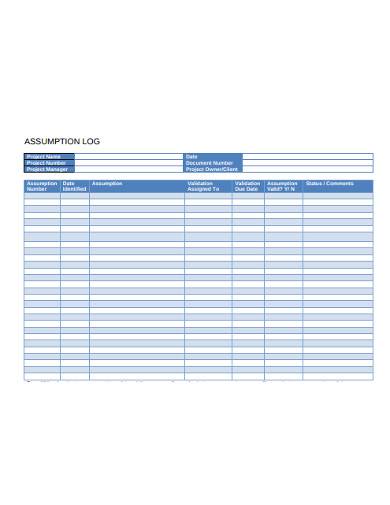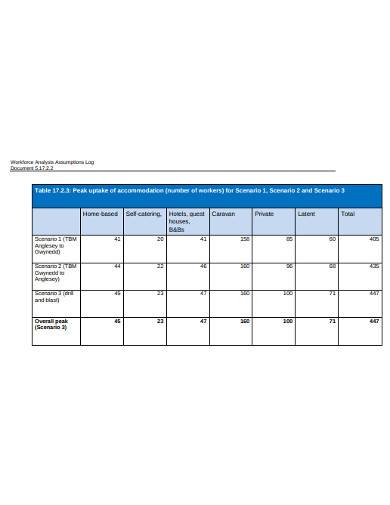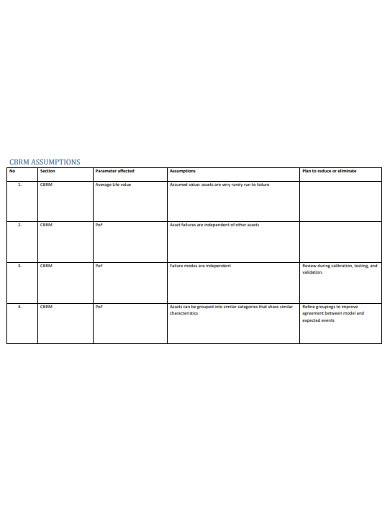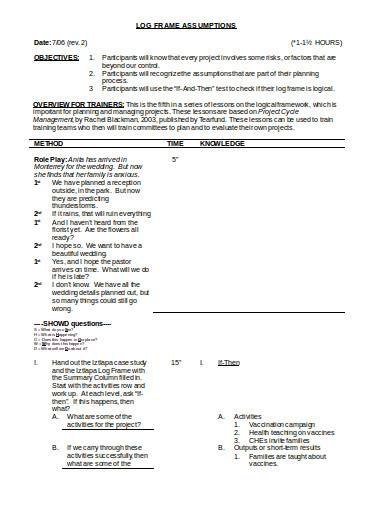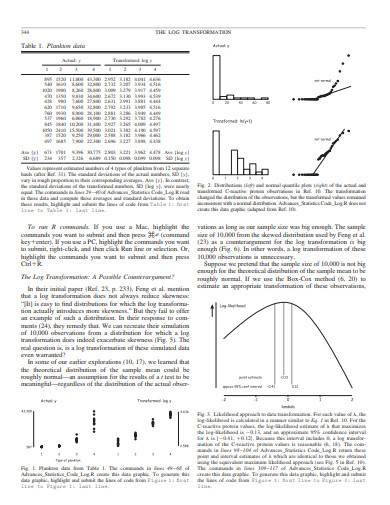Research log, status log, issues log, incident report, and information technology audit report, among other documents, are essential to the businesses and projects since these records can help them decide for the right action plan to implement for a company to grow. However, the information that they can get from these documents may not be enough to get a better view of the business’ future, which is also crucial in determining the right business action plan. You will need to use an assumption log, which, most probably, the reason you are here. If you are looking for a project assumption log templates or samples, you are in the right place. In this article, we gathered a set of examples and templates, which you can use as a reference in obtaining one for your business or project.
If an assumption log management is new to you, we recommend you to read the entire article first to expand your knowledge about this essential business tool. If you think that you already know enough, then you can go ahead and proceed in downloading the logs templates that we prepared for you.
What is an Assumption Log
Even though assumptions are factors that nobody has proven yet, with proper project management, determining these factors can be essential in a business or project plan. To manage the assumptions, you will need an assumption log. For instance, in the project charter, you will use assumptions to support the direction of the project. We call these assumptions as high-level assumptions.
On the other hand, you will need to log the lower-level assumptions during the project life cycle to proceed with the activities. Take note, though, that since you are not doing verification of the assumptions during its creation, you will need to review this log throughout the life cycle of the project. Additionally, if you find out that a project assumption is not correct, it may cause a risk to the business.
What is the RAID Log
You might wonder why we include this section in this article, so we’ll explain it here. Assumptions are actually a part of a more significant piece of business management tool, which is the RAID log. This tool stands for Risks, Actions, Issues, and Decisions. In this segment, we will explain each of the other parts of the RAID Log.
1. Risks
These items are the risks that may potentially affect a business. However, you can mitigate these risks through proper project risk management.
2. Issues
It is common for a project to experience problems even with the risk management in place due to unaccounted factors. However, it does not mean that you cannot deal with them. To do it, you can use an issue log.
3. Decisions
Decisions are quite a critical part since you can make the progress of the project, either good or bad, through this data. By using a decision log template, you can track and manage the past decisions that you have made throughout the project.
4+ Assumption Log Samples
By now, you should know the importance of an assumption log to business management. Let’s take a look at how an assumption log looks in the real world by downloading the following examples.
1. Assumption Log Sample
2. Workforce Analysis Assumption Log Template
3. Basic Assumption Log Sample
4. Log Frame Assumption in DOC
5. Standard Assumption Log Sample
How to Manage an Assumption Log
A weaponized Wuhan virus was what many people assumed about the latest fatal Novel Coronavirus, which originated in Wuhan, China. However, the Asia Times reported that the assumption was due to an erroneous headline of a report, which was the source of the Zero Hedge blog. Just like managing a risk assumption log or any other type of assumption log, an incorrect assumption can lead to undesired problems. Thus, it is essential to do it right from the beginning to avoid the issues associated with false assumptions. Do it by following the steps below.
1. Identify the Assumption
To work independently is a good trait. However, it does not mean that you have to perform this process alone. To create a more extensive assumptions list for your project, ask your team’s input about the task. By doing so, you will get a vast number of options to choose from a variety of perspectives. By working with a team, you can also come up with a well-criticized assumption, which can help you decide if it is actually valid.
2. Create an Assumption Log
Once you have settled for a list of assumptions, you can document these items to an assumption log. You may refer to the examples and templates that we have mentioned in the previous section. Take note, though, that in the documentation process, you must consider your audience, which can be the project stakeholders. To determine the stakeholders of your project, you may use a stakeholder register.
3. Communicate with the Stakeholders
After logging all the assumptions, the next thing that you should do is to share the information with the stakeholders, especially the business leaders. Why? The Assumption log is not just for the keep. Business managers, with your cooperation, will refer to this data in determining the timeline and budget of your project. Probably, with the other projects as well.
4. Monitor and Make Adjustments
We have mentioned it earlier. Since you create assumptions without verifying them, anything can go wrong during its implementation. Thus, regularly monitoring the log is a good practice in assumption management. On the process, you may also have to make necessary changes, especially if you have proven that the assumption is not valid. Since you will regularly monitor it, most likely, you will discover it ahead of time, giving you a chance to mitigate the potential issue.
Obtaining an assumption log for your project is indeed essential in pursuing its success. In this article, we have discussed the things that you need to know to complete the task carefully. However, there are also other things that you need to know to ensure that you attain the desired state for your project. You can learn it either from experience or reading more articles about the process. You may start by reading our article that talked about software roadmap.
Related Posts
34+ Daily Log Samples & Templates
23+ Time Log Samples & Templates
23+ Time Log Templates
27+ Daily Log Templates
9+ Sample Key Log Templates
9+ Research Log Samples & Templates
9+ Sample Expense Log Template
30+ Sample Log Template
15+ Sample Daily Log Templates
10+ Time Log Templates
6+ Communication Log Samples
28+ Log Templates in Excel
31+ Daily Log Templates
6+ Free Issue Log Samples
12+ Sample Mileage Log Templates

